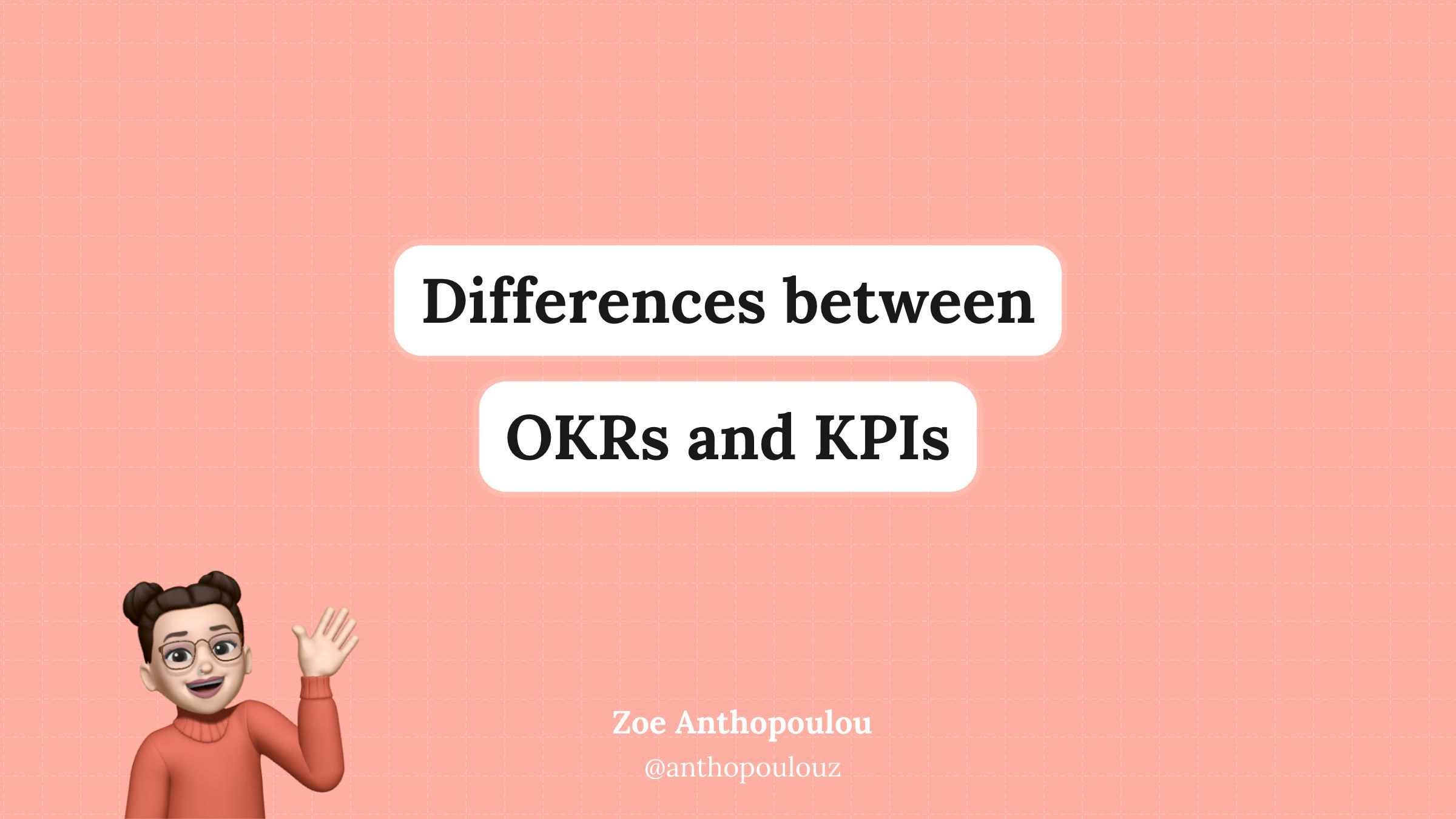Differences between OKRs and KPIs

Zoe Anthopoulou
05 Mar 2024

If you keep hearing about OKRs and KPIs and want to learn more about what these catchy acronyms stand for and how they differ, then keep reading [+Example] 👇
Both OKRs and KPIs are powerful tools that can be used to measure business performance, set goals and drive growth. But how do they differ? And how can an organization leverage them?
✅ OKRs (Objectives and Key Results) are a goal-setting framework used to break company-wide objectives into smaller key results that can be tackled by teams or individuals.
Think of the objectives as the desired outcomes, aligning teams with the organization’s direction, and key results as the specific milestones that indicate progress toward these objectives. Key results can be activity-based or value-based.
✅ KPIs (Key Performance Indicators) are quantifiable metrics used to evaluate the performance of an organization, team, or individual toward specific goals.
They can be leading or lagging indicators, measuring the overall progress and efficiency of an organization, and can be used to keep teams and individuals accountable toward the broader goals of the organization.
KPIs can bleed into OKRs, as they can help measure the impact an OKR has towards an organization’s business performance.
Example👇
Objective: Grow the organization’s customer base
Value-based Key Result: Increase in-app purchases by 10%
Value-based Key Result: Increase product adoption for returning users to 80%
Action-based Key Result: Deliver in-app onboarding by March
KPI: Monthly recurring revenue (MRR) has increased by 5%.
To conclude, OKRs set the direction and define the path to get there, while KPIs serve as navigation tools, indicating whether the journey is on track. Together, they can give you a holistic approach to managing the performance of the whole organization, flowing down to the individual level, and can help you drive growth by keeping everyone accountable and on track.
